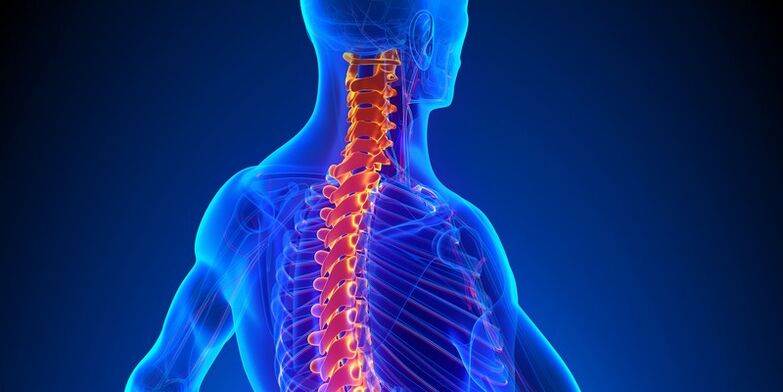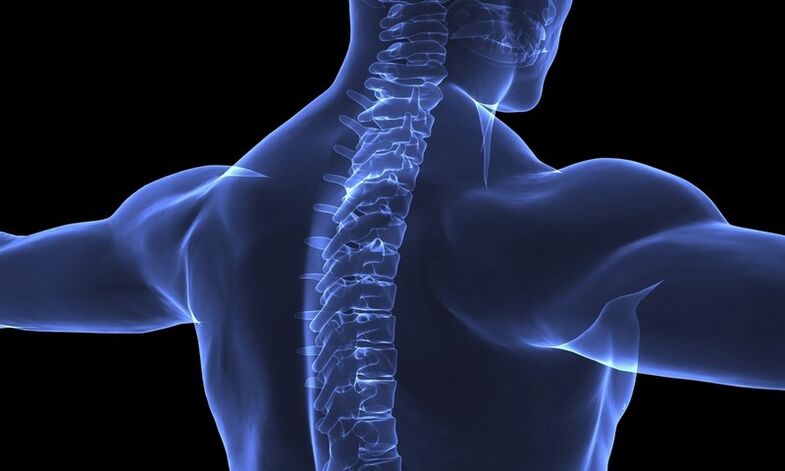If you are worried about neck pain and still have not seen a doctor, you need to find out if genital warts are dangerous, can lead to deadly consequences. Awareness of danger must motivate you to take action.
Cervical fibroids are considered one of the most dangerous lesions of the spine, since a large number of important blood vessels, arteries and capillaries are concentrated in the neck region. That is why among the unpleasant consequences of this disease are vegetative-vascular dystonia, hypertension, oxygen starvation, etc. v.
Cervical fibroids cannot proceed without attention, because in most cases it is accompanied by severe pain, vivid symptoms. Pain syndrome is a sign that the work of the entire organ is disrupted. If you ignore these signs, the consequences can be disastrous, from irreversible spinal damage to death.

After reviewing the information below, you will find that the consequences of cervical osteonecrosis are really serious, which means that in no case should you postpone a full course of complex treatment.
General clinical picture
Violations in the cervical spine mainly affect its lower segments, which are related to physiological and lifestyle features. If you feel pain in the neck, shoulders, or head, this indicates degenerative changes in this area, pinched nerves, muscle spasms or compression of the vertebral arteries.
Cervical fibroids affect the segments of the spine responsible for the functioning of the shoulder and elbow joints, thyroid, hands, esophagus, and trachea. The most common symptoms include pain in these areas of the body, hypothyroidism, seizures, numbness in the face and hands, cough, and difficulty swallowing.
In the early stages of the disease, patients have constant headaches, fatigue, hearing and vision loss, dizziness, and fainting. Naturally, in parallel with this, there is always a sharp or pulling pain in the neck and shoulders. At this stage of the disease, it is important to see a doctor, make a diagnosis, and begin a course of treatment, including special medication and physical therapy, manual therapy for osteonecrosis of the spine. ancient life.
Otherwise, the disease moves to the next level, complications of cervical osteonecrosis begin, which is difficult, if not impossible, to beat.
Spinal cord injury
If a nerve is pinched by discs in the spine in any position, herniation and protrusion will occur. These pathologies are chronic, sometimes aggravated, then subside.If the sharp pain passes and does not cause discomfort even for a few weeks, this does not mean that the disease is in remission and everything goes away on its own. "By itself" it is insurmountable, the treatment of protrusion, and then hernia, requires complex treatment for several months, or even years.
A herniated disc immediately entails bony growth of the vertebral bodies, salt deposition, and sclerotic plaques in the vessels. In addition, the danger comes from the transmission vertebral arteries that cannot carry enough oxygen and nutrients to the brain, inner ear, and upper spinal cord. Oxygen starvation occurs, leading to dizziness, loss of consciousness, and constant fatigue. The pituitary gland hurts, there are disorders in the work of the hypothalamus, the process of breathing and swallowing becomes difficult.
The work of the heart becomes difficult, it begins to work faster, the rhythm increases, the blood pressure automatically increases, and this affects the blood vessels.
Violation of the vegetative-vascular system
Medicines - pain relievers, antispasmodics, analgesic ointments, etc. v. - without parallel physical activity, therapeutic massage, will relieve pain and other symptoms, but only for a short time. The body will quickly get used to the active ingredients, stop responding to them, the disease will recur and the symptoms will get worse.

This threatens vegetative-vascular dystonia - the most dangerous for osteonecrosis of the cervical spine. Due to the compression of the vertebral artery, which supplies one-third of the nutrition to the brain and other vital organs, the whole body suffers.
By the way, many doctors do not consider vegetative vascular dystonia as an independent disease. Experts are sure that this is only a consequence of violating other systems. And osteonecrosis of the cervical spine is often the main "inciter" of cardiovascular diseases.
First of all, the vasomotor center, which is responsible for regulating vital functions, heart function and normal blood pressure, suffers. Due to the lack of normal blood circulation in the upper parts of the body, a person experiences numbness in the hands, difficulty breathing, and difficulty swallowing. Impaired motor skills, possible disorientation in space, frequent fainting, "cottoniness" in the head.
Due to the poor blood flow, the heart is trying to make up for the "shortage", and thus begins to work faster and faster.As a result, blood pressure rises, heart rate increases, and tachycardia begins.After a period of working at such a fast pace, the heart muscle is stretched.
Compression of blood vessels and complications spreading to the thyroid spine cause dysfunction of many internal organs. In particular, the adrenal glands are overworked and secrete the hormone cortisol in excess.
Over time, the disease will progress. Tachycardia, neurological disturbances, as well as hypertension and hypotension will bother a person who has developed cervical osteonecrosis.
High blood pressure and low blood pressure
Another danger of cervical osteochondrosis is the provocation of hypertension, one of the most terrible diseases. Initially, it goes completely unnoticed by a person, without obvious symptoms. Unfortunately, neck pain is rarely associated with hypertension. Without proper treatment, it can develop into coronary heart disease, cause a heart attack, and cause a stroke. As is known, the death rate from cardiovascular disease ranks first in the world.
As for low blood pressure, it cannot directly kill the patient's life, but it can lead to extremely uncomfortable symptoms.
Hypotension is oxygen starvation due to inadequate nutrition of the brain, cerebellum, and inner ear. Because the brain receives less oxygen and other nutrients, it cannot guarantee the full functioning of the body.A person lacks vital energy, he feels weak, chronically tired, nauseated, sleepy.Naturally, he often dropped in form, his form dropped. In the long term, it causes memory, vision and hearing loss, loss of ability to concentrate.
One of the most prominent consequences of cervical spondylosis and the hypotension it causes is the so-called receding syndrome - sudden fainting, and one of the most common - headache andnervous system disorder.
Headache and nervous system disorders
What if you don't have a cold, an acute respiratory infection, your blood pressure is normal, but you still have a constant headache? Most likely these are the consequences of cervical osteonecrosis. Nerves are pinched, blood vessels are pinched, blood is not supplied to the brain in the required volume, as a result pain and dizziness, pounding in the temples, pressing in the occipital region.
In such a state, it is very difficult to continue to do your work with high quality, good mood, focus and play sports. If you enjoy swallowing pills, pain relievers without going to the doctor and having a full examination, then you are at risk of disease and serious disorders of all body systems, including the nervous system. terrible.
Depression, panic, apathy, irritability, aggression - all these are signs of a violation of the functioning of the human nervous system.
If the disease has progressed to a later stage, restricting your movement, limiting life activities, causing constant pain and you have suffered for the past time, the appearance of neuroma is a million. completely natural. In addition, if cervical osteochondrosis is not treated, several syndromes related to dysfunction of several organs may develop.
Syndrome
Cervical osteosarcoma can lead to the following unpleasant syndromes:
- Vestibular trunk syndrome - spoils a person's life and causes a lot of inconvenience. The main symptoms include disorientation in space, loss of hearing and vision, and fainting. Hands may be involuntary, legs will appear weak.
- Because the vestibular apparatus cannot work properly, cochlear syndrome can occur - tinnitus, dark eyes.
- Laryngeal syndrome sometimes occurs. Then the patient had difficulty swallowing, there seemed to be a lump in the throat, and the voice became deeper and rougher.
The list of consequences of cervical osteonecrosis does not end there. Above is the main cause that this insidious disease leads to. Remember that from the first time you complain and suspect you have a spine problem, contact a specialist.
He will conduct the examination, give the treatment plan for each individual.This is the only way to avoid the terrible consequences of cervical osteonecrosis, described in the article.And if you're healthy and the disease doesn't affect you, don't forget to take precautions to stay healthy in the future.
























